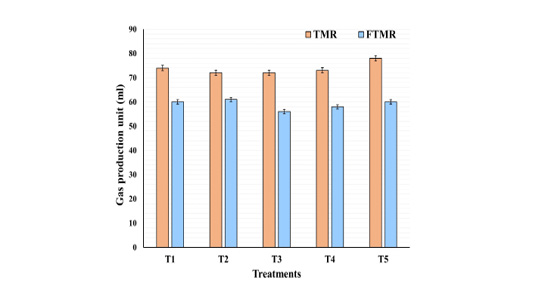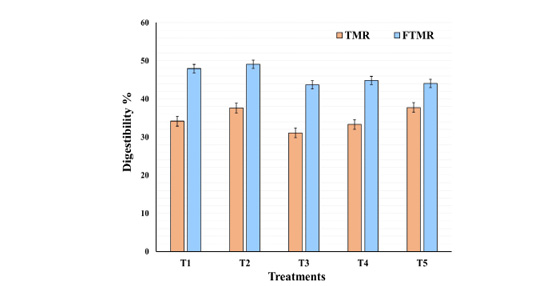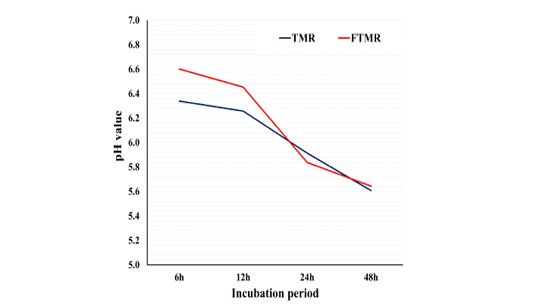Effect of TMR and Fermented TMR on Ruminal In vitro Digestion and Gas Production
Effect of TMR and Fermented TMR on Ruminal In vitro Digestion and Gas Production
Ovirup Bhushan Paul1, Shodipta Sharma Urmi2, Md. Ashraf Ali Biswas3*
Total Gas production of FTMR and TMR feed at 48h incubation period for each replication
(In this figure 1: Total gas production at 48h incubation period is high in TMR than FTMR (Fermented TMR) feed in all replications)
Digestibility (%) of FTMR and TMR feed at 48h incubation period for each replication
(In this figure 2: Digestibility at 48h incubation period is high in FTMR (Fermented TMR) than TMR feed in all replications)
The trends of pH at each 6h, 12h, 24h, and 48h for both FTMR and TMR feed
(Decreasing tendency of pH was observed with increasing incubation period in both FTMR and TMR feed)









